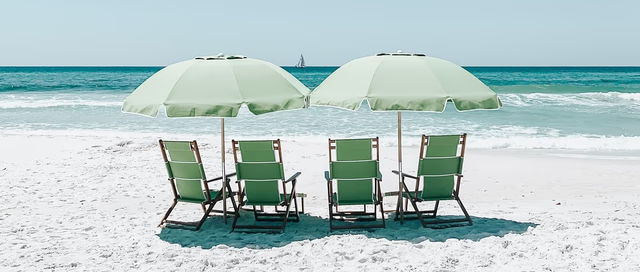
A guide to UV protection sunglasses
Peer reviewed by Dr Krishna Vakharia, MRCGPLast updated by Amberley DavisLast updated 23 Jun 2023
Sunglasses make a great summer fashion accessory, but the right pair can do so much more for you. From short-term symptoms to visual impairment and cancer, ultraviolet radiation (UV) damage from sunlight is a health concern we all need to be aware of this summer. And this starts with how we choose our sunglasses.
In this article:
Continue reading below
Why are sunglasses important?
It's not just our skin that ultraviolet radiation (UV) can damage. Long-term exposure to the UV rays in sunlight can harm the structures inside our eyes, as well as the skin around it. Experts believe that our eyes are 10 times more sensitive to UV light than our skin1.
Bhavin Shah, behavioural optometrist at Central Vision Opticians, says that protecting our eyes is essential: "this is especially true for long-term exposure and for young people. It's thought that up to 80% of a person's exposure to sunlight occurs before the age of 18."
UV light is made up of UVA and UVB radiation - invisible rays of light projected from the sun.
UVA radiation - penetrates more deeply into the eye, potentially damaging the lens and retina behind the iris (the coloured part) and pupil (the black part). This can cause eye conditions, damage vision, and accelerate ageing.
UVB radiation - gets absorbed by the surface of the cornea, the clear outer layer of the eye that covers the iris and pupil. Repeated exposure can cause permanent damage to the cornea.
Patient picks for Other skin problems
Benefits of sunglasses
By purchasing UV protection sunglasses that meet the health standards of protection, you can:
Protect your eyesight
According to Dr Robbie Walker, consultant ophthalmologist at Real Clinic, long-term sun exposure can accelerate cataract formation. "This is when the natural lens inside your eye becomes cloudy and reduces your vision. Cataracts are normally associated with ageing."
One study found that not wearing sunglasses, or using other protective measures like broad-rimmed hats, increased the risk of cataracts by up to 70%2.
"We also think that sunlight can worsen age-related macular degeneration (AMD) in people that are susceptible to the condition," says Walker. This eye condition is caused by the retina breaking down - a part of the back of the eye that's responsible for sharp vision and detail. Although related to age, regularly spending up to eight hours in the sun without eye protection means you're much more likely to develop AMD a lot younger3.
Prevent growths
Not wearing UV protection sunglasses can also increase the risk of growths on the skin around the eye.
Reduce short-term sun damage
Much like skin, our eyes are also vulnerable to the temporary and uncomfortable symptoms of over-exposure. Optometrist Shah says: "over exposure to UV light - and especially to reflected light which can happen while skiing or playing water sports - can cause short-term damage to the front surface of the eye that's similar to sunburn."
This sunburn-like condition is called photokeratitis, and often involves painful, swollen, red, and watery eyes that can last around one or two days. In severe cases, it can cause temporary loss of vision - but this damage isn't permanent.
Avoid eye strain
Wearing dark-tinted sunglasses can also protect your eyes from visible light, which reduces the strain you put on your eyes when you squint to see in bright sunlight. If you're prone to headaches and migraines, this may help.
However, don't assume that all dark-tinted lenses offer UV protection - in fact, very dark lenses typically offer no UV protection at all.
Continue reading below
What to look for when choosing sunglasses
UV protection sunglasses
When it comes to buying sunglasses, UV protection is the single most important factor. Your sunglasses need to sufficiently block enough UVA and UVB rays, and just like SPF for sunscreen, there are standards to look out for:
UV400 - this level of protection can filter up to 99% of UVA and UVB rays.
British Standard Mark - in Britain, this indicates not only a good level of UV protection, but also assures quality in strength, design, stability, and manufacture.
CE - in Europe, this shows that sunglasses meet the health and safety standards of the EU.
Shade number - some have shade numbers ranging from 0 - 4 that relate to the amount of UV allowed through. The higher the number, the better the protection.
Blue light and spectral filters
Experts believe that there could also be some benefits in sunglasses that also have blue light blocking filters - a visible, high-energy form of radiation - but Shah explains that evidence is mixed.
"A blue light filter is not specifically required when buying sunglasses, but some manufacturers make sunglasses which block more of the blue end of the light spectrum because this may help to reduce glare and eye strain.
"While blue light may damage the cells in the retina and help to reduce overstimulation when using digital devices, the evidence is contradictory and inconclusive."
Instead, the optometrist recommends a spectral filter which blocks more than the blue end of the spectrum of light. "This makes them comfortable to wear when driving in overcast weather," he adds.
Anti-glare, polarised, and anti-reflection
You may find that different UV protection sunglasses also claim to be anti-glare, polarised, or anti-reflective. Shah breaks down what these terms mean, and how important they are.
"If you're going to be out on the ski slopes, above water while fishing or sailing, or driving on a wet surface, then a pair of UV protection sunglasses with polarised lenses will be best.
"Anti-glare, polarised lenses, and anti-reflective lenses mean slightly different things. All sunglasses will reduce glare to some extent, and anti-reflective surfaces minimise some glare from the back surface of the lenses. Polarised lenses reduce glare specifically from reflected sunlight, such as from snow, water, or a wet road surface. These tend to be better for reducing glare and are usually darker than non-polarised lenses.
"The downside of polarised lenses is that when viewing some screens - such as phones or display panels in cars - they may filter and reduce the image quality. Pilots can't use polarised sunglasses because they hinder their ability to see the instrument panel in modern planes."
Size, style and position
For the ultimate protection, you'll also want to consider how your sunglasses fit around your eyes. UV rays don't do all their damage head on - they can also be scattered and reflected so that they enter your eyes from the above, below, and the sides of your glasses. This means that:
Small sunglasses are more likely to let UV light reach your eyes from the side.
Sunglasses that sit 6 mm or more away from your forehead increases the amount of UV exposure by up to 20%4.
Therefore, wrap-around and tight-fitting designs and side shields offer more protection.
This is especially important if you’re around light reflective surfaces such as snow, water, and sand.
Other sunglass buying tips
Price tag doesn't guarantee protection - some expensive and designer brands don't offer the optimal protection against UV5.
Sunglasses with no UV protection can be more harmful than wearing nothing - tinted lenses open the pupil wider which allows in more UV light than would happen normally.
Buy from a reputable source or outlet.
Ensure there are no scratches or defects on the lenses - these will reduce protection by scattering the sun's light and could cause glare around the scratch.
You can also get prescription sunglasses - ask your optician for sunglasses that have your usual optical prescription.
UV sun protection contact lenses are also an option - while not all contact lens practitioners provide them, this area is growing quickly.
Further reading
Shick et al: History of sunlight exposure is a risk factor for age-related macular degeneration.
Izadi et al: Photokeratitis induced by ultraviolet radiation in travelers: A major health problem.
UVA radiation - penetrates more deeply into the eye, potentially damaging the lens and retina behind the iris and pupil. This can cause eye conditions, damage vision, and accelerate ageing.
Article History
The information on this page is written and peer reviewed by qualified clinicians.
23 Jun 2023 | Latest version
23 Jun 2023 | Originally published
Authored by:
Amberley Davis

Feeling unwell?
Assess your symptoms online for free

